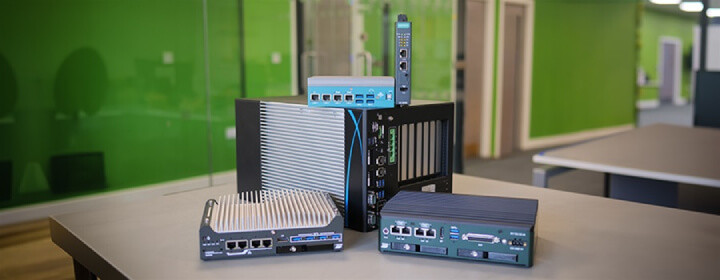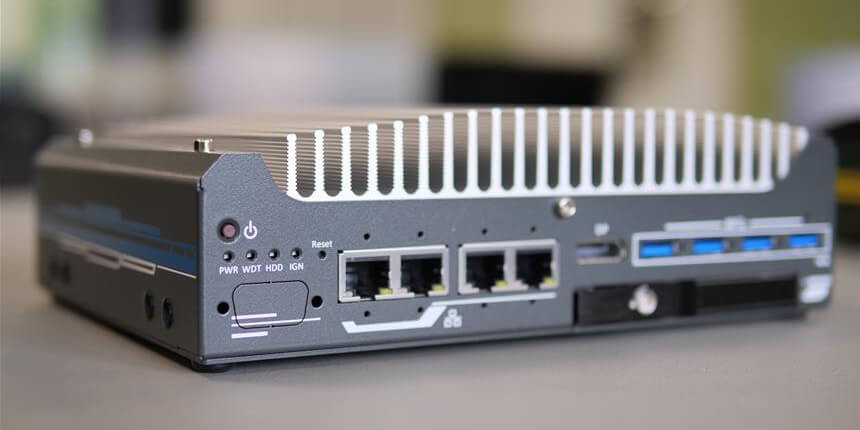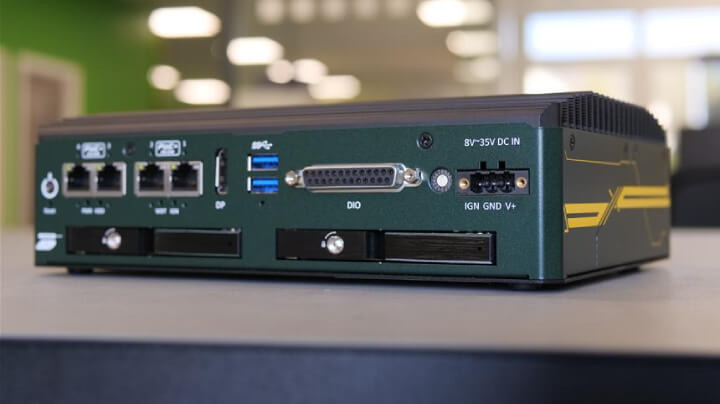Edge vs. Cloud: Determining the Superior Computing Model for Industrial Use
24-10-2023 | By Impulse Embedded
Edge and Cloud computing represent two distinct paradigms in the world of data processing and storage. Each has its unique advantages tailored to specific technological requirements. While they cater to different needs, there's also an emerging trend of blending the two in a hybrid model. The decision between them hinges on various factors, including latency, data concerns, available resources, and the nature of the use case.
If you're uncertain about the intricacies of Edge computing or pondering the benefits of Cloud computing, the choice boils down to the technical demands of your setup. Let's delve into the core differences between Edge and Cloud computing, explore other prevalent paradigms, and determine the optimal approach for your needs.

Diving into Computing Frameworks
Before diving deeper into Edge and Cloud computing, it's essential to grasp the concept of a computing framework. Such a framework dictates how computational tasks are organised, executed, and managed. Over time, various frameworks have emerged, each tailored to specific computational needs and challenges.
- Sequential Computing: Tasks are processed sequentially, one after the other.
- Parallel Computing: Enables simultaneous task execution, enhancing processing speed.
- Distributed Computing: Tasks are spread across multiple systems, promoting collaboration.
- Grid Computing: A form of distributed computing, but with a focus on geographically dispersed resource sharing.
- Quantum Computing: Leverages quantum mechanics principles for complex calculations.
- Cognitive Computing: Systems designed to mimic human thought processes.
- High-performance Computing: Uses supercomputers for efficient problem-solving.
- Serverless Computing: Developers can create applications without managing the infrastructure.
With a foundational understanding of these frameworks, we can now explore the specifics of Edge and Cloud computing, two paradigms that are reshaping the tech industry.
Unpacking Edge Computing
Edge computing stands out for its proximity-based approach to data processing. By handling data closer to its source, such as IoT devices or sensors, Edge computing ensures minimal latency. This immediacy is particularly beneficial for applications that demand real-time responses, making it a preferred choice in industries like manufacturing or autonomous systems.
However, while Edge computing offers the advantage of speed, it might face challenges in terms of resource availability. Given its decentralised nature, the resources at the edge might be limited compared to centralised systems, making it more suitable for tasks that can be executed swiftly and don't require extensive computational power.
Despite its limitations, the rise of IoT and the increasing need for real-time data processing have positioned Edge computing as a vital player in the modern tech landscape.

NUVO-9531 Embedded PC
Rugged Edge AI Platforms
Impulse offers a range of rugged Edge AI compute platforms that are designed to withstand various environments. Whether it's for in-vehicle applications, industrial settings, medical equipment, surveillance systems, or drones, these platforms come equipped with the necessary hardware and software capabilities. Backed by services like software integration, hardware customisation, and global logistics support, businesses can seamlessly integrate Edge AI into their operations.
Edge AI in Industry
Edge AI is proving to be invaluable in various industrial scenarios. Some of the benefits include:
- Efficiency: By reducing the delay between input and output, businesses can save both time and money.
- Redundancy: Continuous decision-making is ensured even if connections to cloud systems are disrupted.
- Cost-effectiveness: Local processing using GPU computing minimises overheads associated with cloud-based services.
- Security: Keeping data locally minimises security risks. Moreover, AI-enabled systems can detect and deter security intrusions faster than traditional systems.
From predictive maintenance in manufacturing to real-time analytics in autonomous systems, Edge AI is paving the way for smarter, more responsive operations.
Choosing the Right Edge AI Hardware
When it comes to integrating Edge AI into operations, choosing the right hardware is crucial. Impulse provides solutions like NVIDIA Jetson and Discrete GPU Cards, designed specifically for high-performance edge inference applications. These platforms ensure that businesses can harness the power of AI right at the edge, making real-time decision-making a reality.
Deciphering Cloud Computing
Cloud computing operates on a centralised model, processing and storing data in powerful servers often located in data centres. Its strength lies in its scalability and flexibility, making it an ideal choice for businesses with dynamic needs. The vast resources of Cloud servers mean they can handle tasks that require significant computational power and storage.
However, Cloud computing isn't without its challenges. Relying on a centralised system means there's a dependency on stable internet connectivity. Additionally, data security concerns arise when data is stored offsite, even though many professional Cloud providers implement robust security measures, including encryption, to safeguard data.
Despite these challenges, Cloud computing's ability to cater to fluctuating demands and provide access to vast resources has solidified its position as a cornerstone in the tech industry.
Optimal Scenarios for Edge and Cloud
Edge computing shines in environments that prioritise swift, real-time actions. Industries such as manufacturing, autonomous driving, and real-time analytics benefit immensely from the reduced latency Edge computing provides. For instance, in industrial settings, immediate data processing can lead to predictive maintenance and more efficient machinery operations.
Conversely, Cloud computing is the go-to for tasks that require extensive computational resources. Businesses involved in big data analytics, complex software projects, or machine learning models often lean on Cloud computing. Its scalability ensures adaptability to changing demands, and its centralised nature provides robust backup and recovery systems, ensuring data safety in case of local failures.
While both Edge and Cloud computing have their unique strengths, the choice between them often depends on the specific requirements of a project or application.
Embracing a Combined Strategy
Modern technological demands often require a blend of both Edge and Cloud computing, leading to the emergence of a hybrid strategy. This approach leverages the immediacy of Edge computing with the vast resources of Cloud computing, providing a balanced solution for many applications.
By processing some data at the edge while offloading resource-intensive tasks to the Cloud, businesses can optimise performance, availability, and costs. This combined strategy offers the best of both worlds, ensuring real-time responsiveness while also catering to fluctuating computational demands.
Adopting a hybrid approach allows for a more versatile computing environment tailored to the unique needs of each project or application.

NRU-120S Edge AI-based Industrial PC
Navigating the Decision
Choosing between Edge, Cloud, or a hybrid approach is not a one-size-fits-all decision. It's crucial to align the choice with the specific needs of an application and overarching business objectives.
Edge computing is ideal for scenarios that demand real-time responsiveness, such as autonomous systems or immediate data analytics. In contrast, Cloud computing is more suited for applications that require vast computational resources, like big data analytics or extensive software development projects.
However, for many modern applications, a hybrid approach might be the most effective strategy. By understanding the strengths and limitations of both Edge and Cloud computing, businesses can harness their combined power, ensuring optimal performance and efficiency.
Ultimately, the decision should be rooted in a thorough understanding of the computing paradigms and a clear vision of the desired outcomes.
In Conclusion
The choice between Edge, Cloud, or a hybrid computing approach is pivotal in today's technology-driven landscape. Both Edge and Cloud computing offer distinct advantages, addressing specific technological needs. While Edge computing provides real-time responsiveness, Cloud computing offers scalability and vast resources. The hybrid approach, combining the strengths of both, presents a balanced solution for many modern applications.
As technology continues to advance, staying informed about these computing paradigms becomes increasingly essential. By understanding their nuances and aligning choices with business goals, organisations can navigate the tech landscape with confidence and efficiency.

